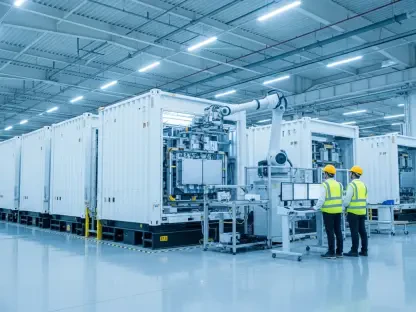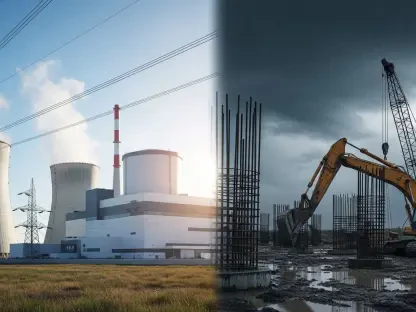Listen to the Article
The Earth is crying out for cleaner and more sustainable energy sources for power generation. Relying on conventional fossil fuels like oil and coal has led to the production of planet-heating greenhouse gases that significantly compromise human health. However, despite a unanimous call for renewable energy like hydro or solar, these approaches only account for nearly 13% of the world’s total energy usage—compared to the 79% attributed to fossil fuels.
To strike a more compelling balance between the two, scientists are embracing the potential of artificial photosynthesis to develop more eco-friendly techniques such as creating clean-burning hydrogen fuel. The question is: What difference will this make to power generation? Let’s find out.
Out with the Old, In with the New
Natural Photosynthesis
In nature, photosynthesis occurs naturally in green plant life to synthesize nutrients. The process involves capturing sunlight, water, and carbon dioxide to produce oxygen and glucose. In other words, plants turn light energy into chemical energy to create energy-rich organic compounds. The success of photosynthesis as an energy generator lies in the unlimited nature of the process, as the organic materials needed for it to occur exist in perpetuity.
Sunlight splits water into its separate constituents: hydrogen equivalents and oxygen. The latter is released into the atmosphere, where living organisms use it to breathe and for technology-powering fuels to burn. The former is used to reduce carbon dioxide to organic molecules. In light of this, researchers have been inspired to artificially mimic this process through biomimetic techniques. By doing so, scientists can design systems that convert solar energy into chemical energy and store it in the chemical bonds of fuel.
Artificial Photosynthesis
The fuels produced by artificial photosynthesis include pure hydrogen fuel, as well as hydrocarbons like formic acid, methanol, and methane. Using devices like photoelectrochemical cells or photovoltaic-coupled electrolyzers, artificial photosynthesis undergoes a chemical process similar to its natural counterpart that is catalyzed by sunlight photons. However, carbon dioxide is only reduced into different hydrocarbons, while excluding the production of organic materials.
These hydrocarbons hold significant potential as a renewable source of valuable fuel—and a prospective substitute for fossil fuels. In addition, artificial photosynthesis devices extract excess carbon dioxide from the air and then release oxygen into the environment to clean the atmosphere. While the potential applications are innovative, it does beg the question: What would a world powered by artificial photosynthesis look like?
The Environmental Impact of Artificial Photosynthesis
Artificial photosynthesis has brought forward a new frontier for clean energy. With the ability to easily store energy between the chemical bonds of fuel, without the need for bulky batteries, this approach also significantly improves how cleanly and efficiently society is powered. In fact, global artificial photosynthesis has the potential to replace corporate globalization policies and help societies better understand the implications of the ever-evolving usage of non-renewable and pollution-heavy energy systems.
However, despite this opportunity, the world utilizes sunlight-catalyzed power for less than 1% of its commercial energy mix. This is because fully pivoting from fossil fuel reliance necessitates society to counter the vast labor and capital already sunk into conventional energy sources. Breaking this mold requires a long-haul transformation that keeps companies change-resistant and locked into carbon dependence.
Fortunately, various industries are well underway to overcome this feat and unlock unparalleled sustainability and more eco-conscious energy practices. From expansive population growth to climate change challenges, the food and agriculture industry is no stranger to the demand for food sustainability. Meeting this need requires widespread adoption of innovative solutions—which is why more enterprises are embracing the notion of artificial photosynthesis.
By shifting with the paradigm, farmers can confidently contribute to global food security while boosting agricultural productivity and crop yields. This approach also punctuates the promise of reduced reliance on harmful fossil fuels in agriculture to power machinery and farm equipment. Utilizing artificial photosynthesis by capturing and using carbon dioxide from the atmosphere empowers farmers to become more carbon-neutral.
The Artificial Leaf
In achieving this goal, Professor Daniel G. Nocera and his Harvard researchers have made considerable strides based on the concept of a Sustainocene. This theory suggests that it is impossible to view sustainability through the singular view of ecological integrity while societal imbalances and poverty are evident. With this notion as the jumping block, Nocera’s team is carving the path for decentralized energy through artificial photosynthesis.
By doing so, Nocera and his researchers have developed an artificial leaf that promises a wider absorption spectrum compared to the traditional photosynthesis process—making it 10 times more efficient than its natural counterpart. This technology consists of light-absorbing material that, when placed in water, can direct solar energy to split water into its constituents. As a result, the hydrogen equivalents can be collected into fuel cells.
In terms of its environmental impact, using the artificial leaf within a bioreactor can establish an energy-rich environment through solar energy. This condition favors microorganism-based nitrogen fixation that produces biofertilizers. Therefore, not only is this alternative renewable and carbon-negative, but also has the power to lessen nitrogen run off rates linked to harmful algal blooms.
In addition, leveraging artificial leaf technology enables the decentralization of fuel and fertilizer production. In the same light, artificial photosynthesis proves to be beneficial for energy production due to its environmental integrity and its ability to provide greater fuel and fertilizer access to less developed areas.
Summary
As a beacon of hope in the energy sector, artificial photosynthesis has the potential to holistically transform energy generation and its subsequent environmental impact. By converting solar energy into clean, renewable fuel, this approach can significantly reduce society’s reliance on fossil fuels—while alleviating its detrimental contribution to today’s air quality. In this way, artificial photosynthesis offers a decentralized solution to creating more sustainable energy systems to power a plethora of industries, such as farming and agriculture.
Carving a path toward a more eco-friendly and eco-conscious world necessitates bolder steps forward. As more industries gain the confidence to challenge the status quo and embrace this innovative technology, artificial photosynthesis brings to light the power of establishing everlasting and meaningful alternatives to energy generation and the possibilities of a brighter future.









